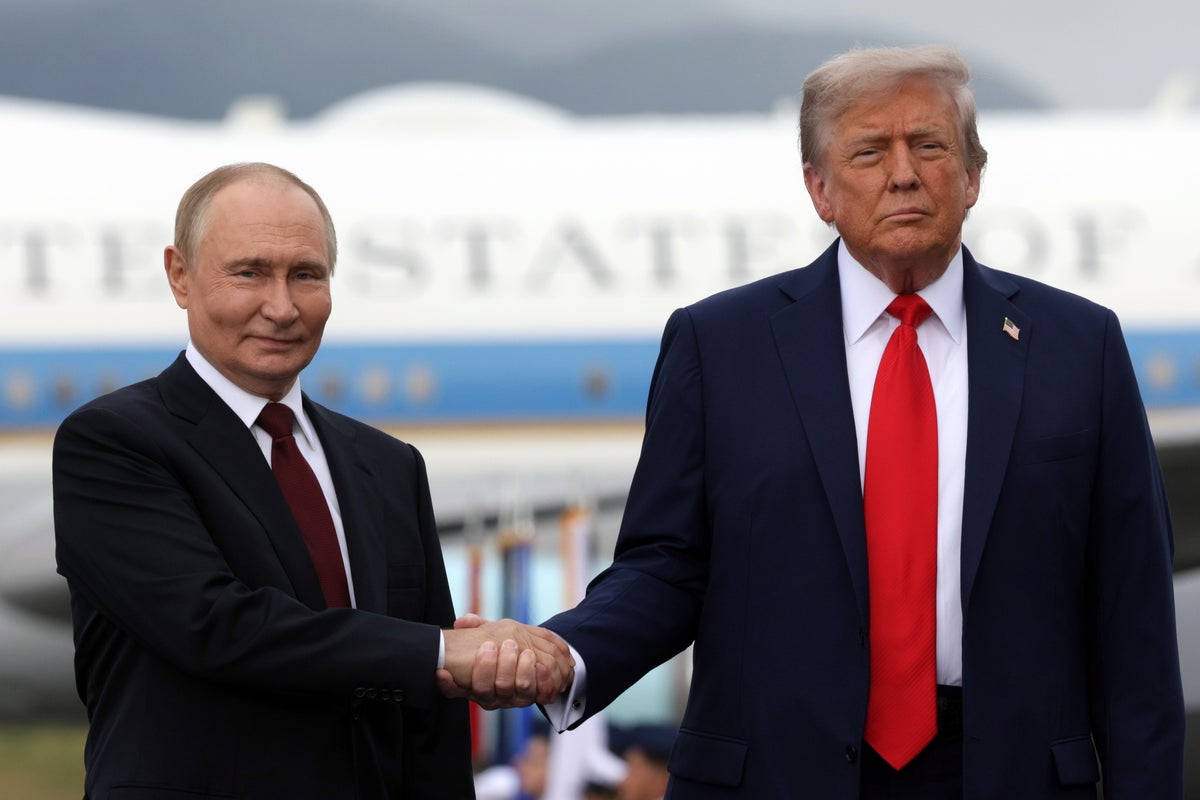They were careful with the explicit imagery — as usual. But did it make any difference?
Traditional news organizations were cautious in their midafternoon coverage of Charlie Kirk’s assassination Wednesday not to depict the moment he was shot, instead showing video of him tossing a hat to his audience moments before, and panicked onlookers scattering wildly in the moments after.
In practical terms, though, it mattered little. Gory video of the shooting was available almost instantly online, from several angles, in slow-motion and real-time speed. Millions of people watched.
Video was easy to find on X, on Facebook, on TikTok, on Instagram, on YouTube — even on Truth Social, where President Donald Trump posted official word of the conservative activist’s death. It illustrated how the “gatekeeping” role of news organizations has changed in the era of social media.
Kirk was shot at a public event before hundreds of people at a Utah college campus, many of them holding up phones to record a celebrity in their midst and savvy about how to disseminate video evidence of a news event.
On X, there was a video showing a direct view of Kirk being shot, his body recoiling and blood gushing from a wound. One video was a loop showing the moment of impact in slow-motion, stopping before blood is seen. Another, taken from Kirk’s left, included audio that suggested Kirk was talking about gun violence at the moment he was shot.
For more than 150 years, news organizations like newspapers and television networks have long been accustomed to “gatekeeping” when it comes to explicit content — making editorial decisions around violent events to decide what images and words appear on their platforms for their readers or viewers. But in the fragmented era of social media, smartphones and instant video uploads, editorial decisions by legacy media are less impactful than ever.
Images spread across the country
Across the country in Ithaca, New York, college professor Sarah Kreps’ teenage sons texted her about Kirk’s assassination shortly after school was dismissed and they could access their phones.
No, she told them. He was shot, but there were no reports that he had died. Her son answered: Have you seen the video? There’s no way he could have survived that.
The videos were posted and reposted at lightning speed. One person on X urged “stop the violence” but then included a clip of the shooting. Several people took to social media to plead for people not to spread the images. “For the love of God and Charlie’s family,” read one message, “just stop.”
YouTube said it was removing “some graphic content” related to the event if it doesn’t provide sufficient content, and restricting videos so they could not be seen by users under age 18 or those who are not signed in, the company said.
“Our hearts are with Charlie Kirk’s family following his tragic death,” YouTube said. “We are closely monitoring our platform and prominently elevating news content on the homepage, in search and in recommendations to help people stay informed.”
Meta’s rules don’t prohibit posting videos like Kirk’s shooting, but warning labels are applied and they are not shown to users who say they are under 18. The parent company of Instagram, Facebook and Threads referred a reporter to the company’s policies on violent and graphic content, which they indicated would apply in this case, but had no further comment. An X representative did not immediately return a request for comment.
It’s an issue social media companies have dealt with before, in equally gruesome circumstances. Facebook was forced to contend with people wanting to livestream violence with a mass shooting in New Zealand in 2019, said Cornell University’s Kreps, author of the forthcoming book, “Harnessing Disruption: Building the Tech Future Without Breaking Society.”
Getting to the other side
Some images seeped out into more traditional media. TMZ posted a video of Kirk in which a shot and a voice saying, “Oh, my God,” can be heard, but Kirk’s upper body was blurred out. A similar video with a blurred image of Kirk was posted on the New York Post’s website.
In such an atmosphere, the care shown by most traditional news outlets may seem quaint or old-fashioned. But news industry leaders are acutely aware of protecting people from graphic images when they are not expecting it; happening upon them is a little harder online, where many people have to search for and click on an image if they want to see it — if it hasn’t already been sent to you or your group chat.
There can also be an important message sent by news outlets being cautious in what they show, Kreps said. “The traditional media can amplify and validate behavior,” she said. “It can be a signal for how things should be stigmatized, rather than validated or normalized.”
But on the day of the shooting in a politically polarized country, the easy availability of shocking images ran the risk of making society’s wound even more painful.
“I don’t see how many signs of how we get — as a people, as a nation — to the other side of this,” said CNN’s David Chalian. “I think we are broken, and potentially beyond repair.”
___
AP correspondent Barbara Ortutay in San Francisco contributed to this report. David Bauder writes about media for the AP. Follow him at http://x.com/dbauder and https://bsky.app/profile/dbauder.bsky.social.


